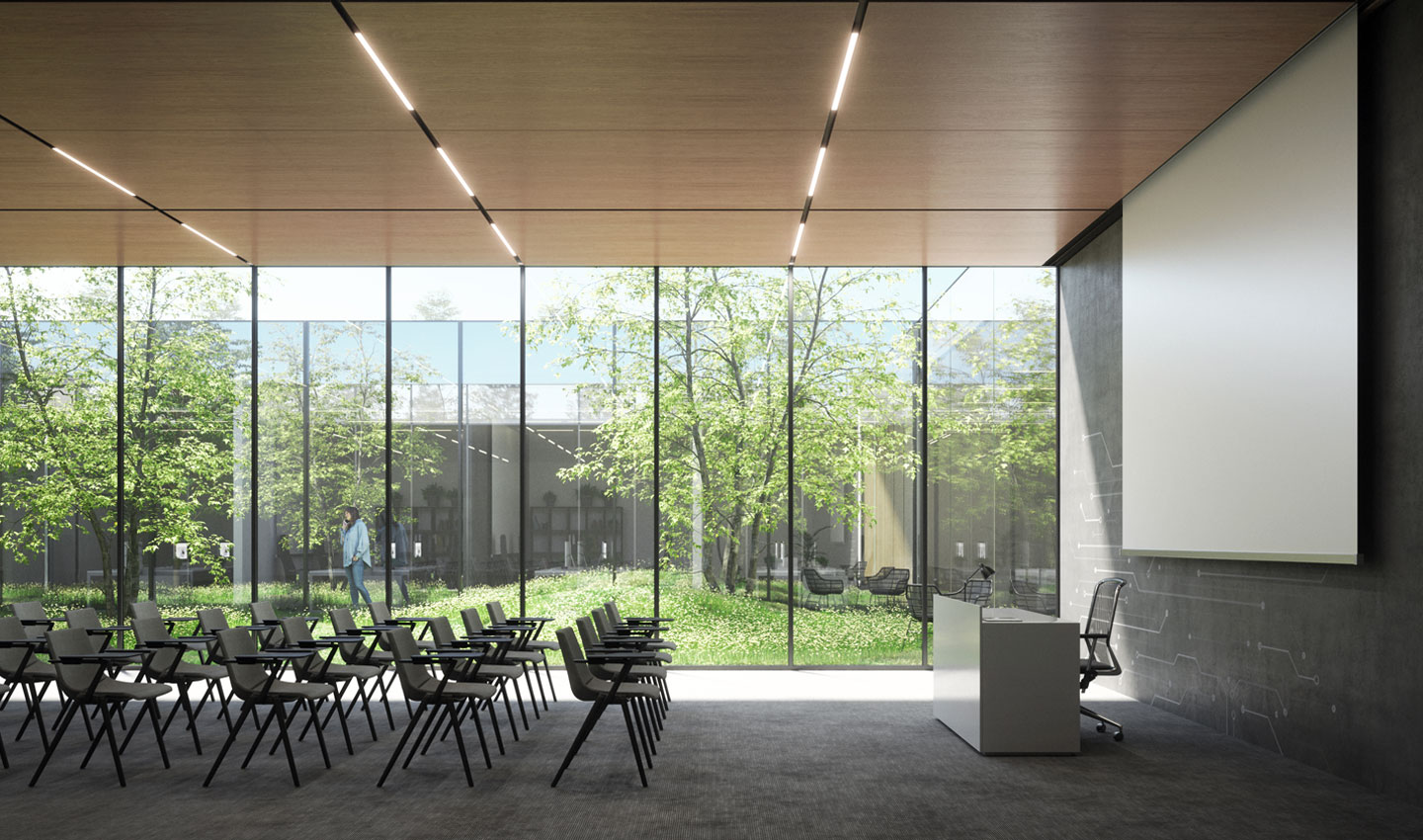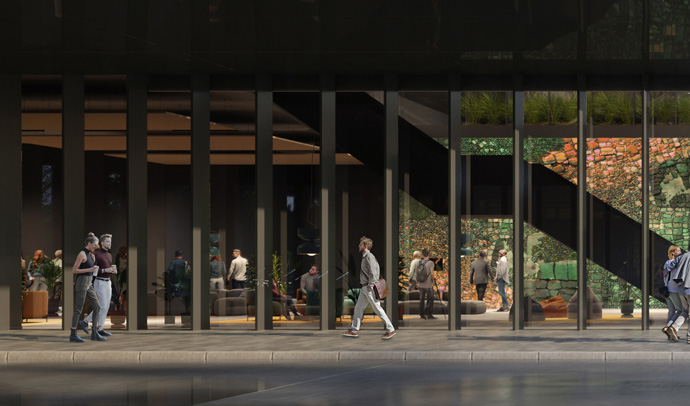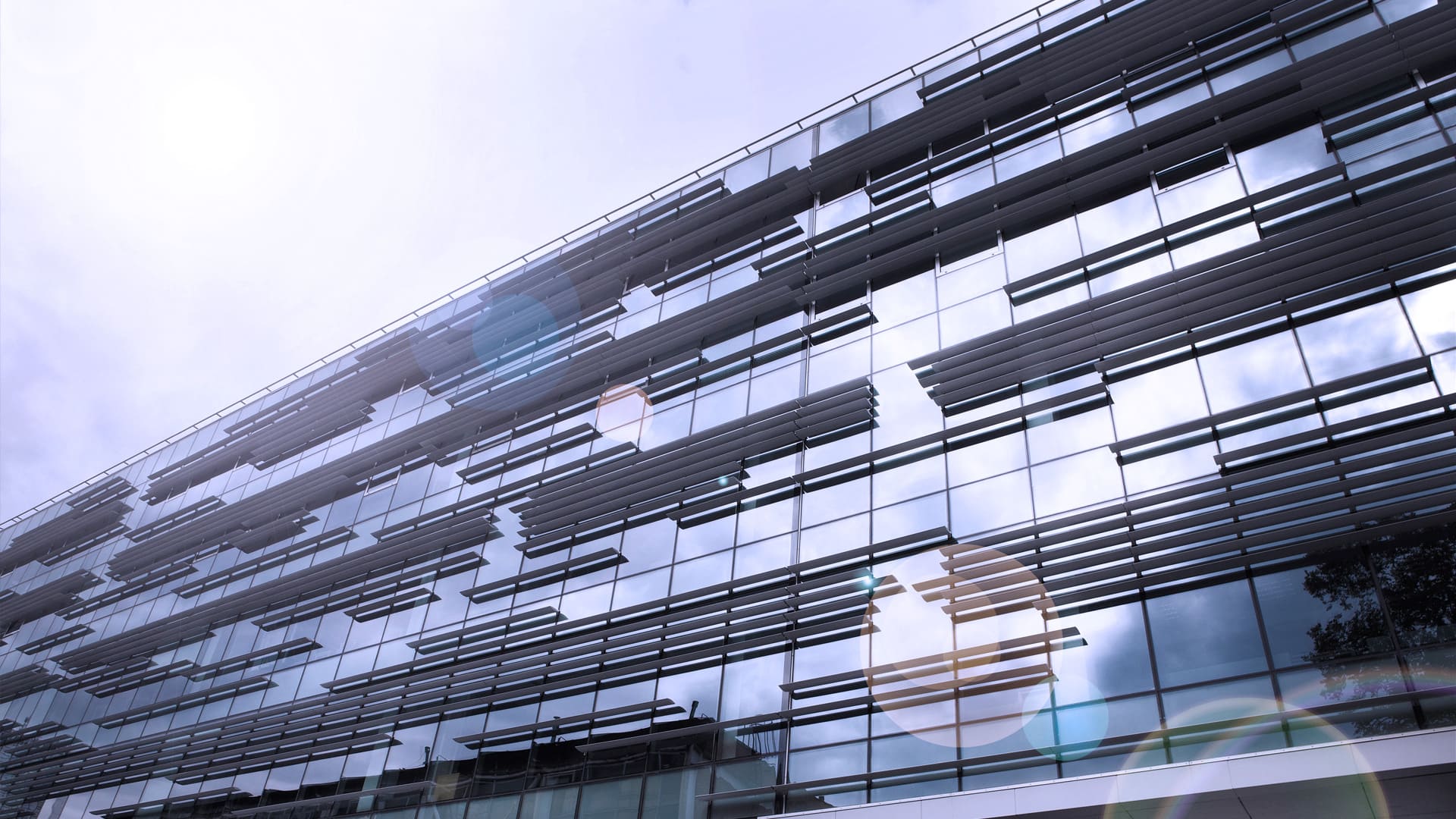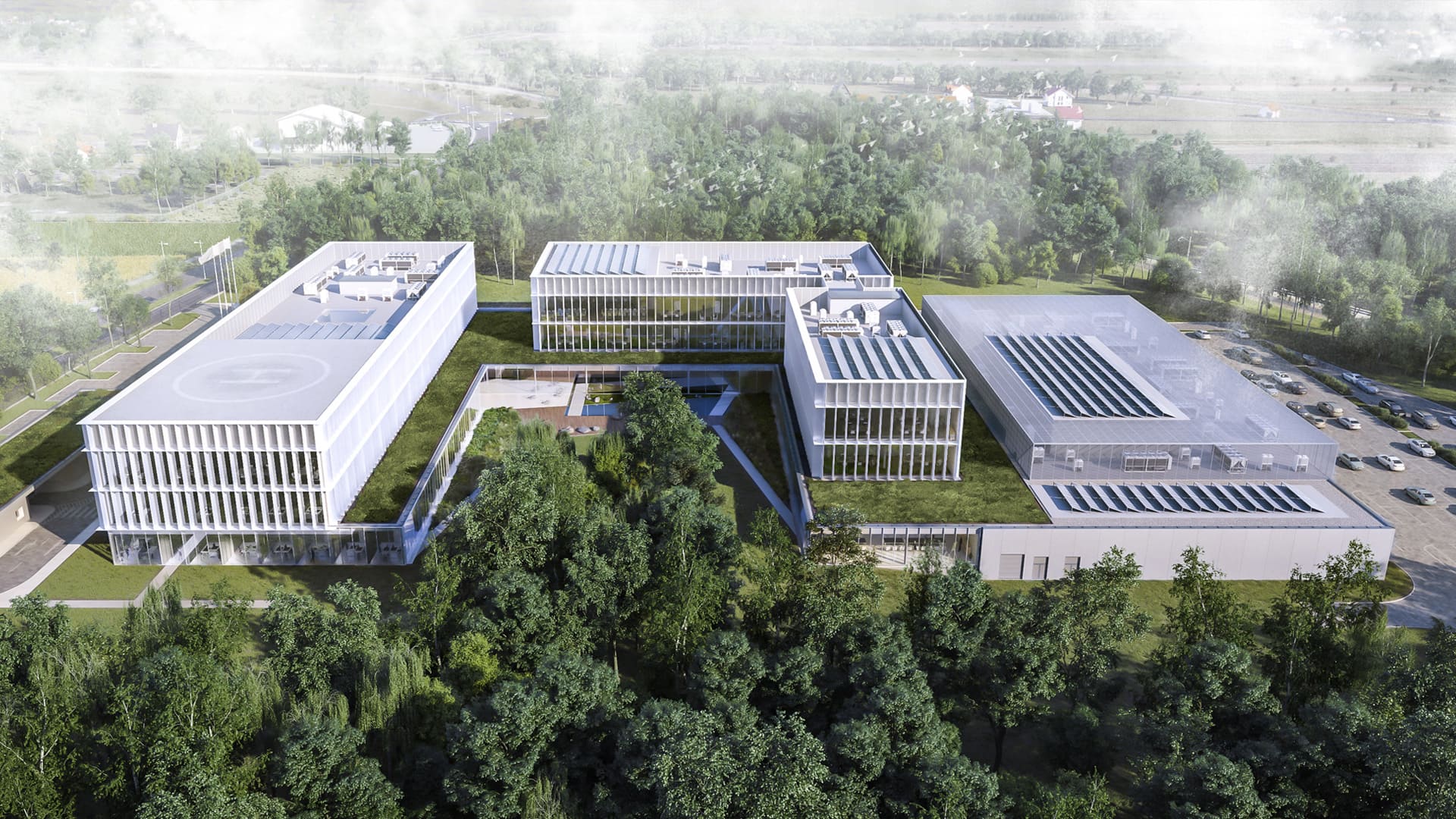“Genius loci significantly influences the quality of life for the local community, as it enriches people’s spiritual sphere, enhances their artistic sensitivity, as well as intellectual and creative capacities. Consequently, it is a potential source of inspiration for landscape design (…). For such spirit to exist, places need to be unique, distinctive, easily identifiable, evoke a wealth of experiences, be permeated with important content that reaches the essence of human needs and feelings. The mere existence of the phenomenon known as the spirit of a place is unique and thus worth to preserve; to save what contributes to this individual, unique quality and its entire context. Not only do we need to protect places endowed with a special atmosphere but also make effort to create them.
Since Genius Loci is a concept inscribed in the subjective perception of a place, one should be able to perceive values of a place and remain open to them. (…) The spirit of a place is understood as a set of characteristics that give a distinctive quality to a place.” End quote from Krystyna Dąbrowska-Budziło, “Genius Loci, jako potencjalne źródło inspiracji dla kształtowania krajobrazu” (Genius Loci, as a potential source of inspiration for landscape design), 2011, Cracow University of Technology.
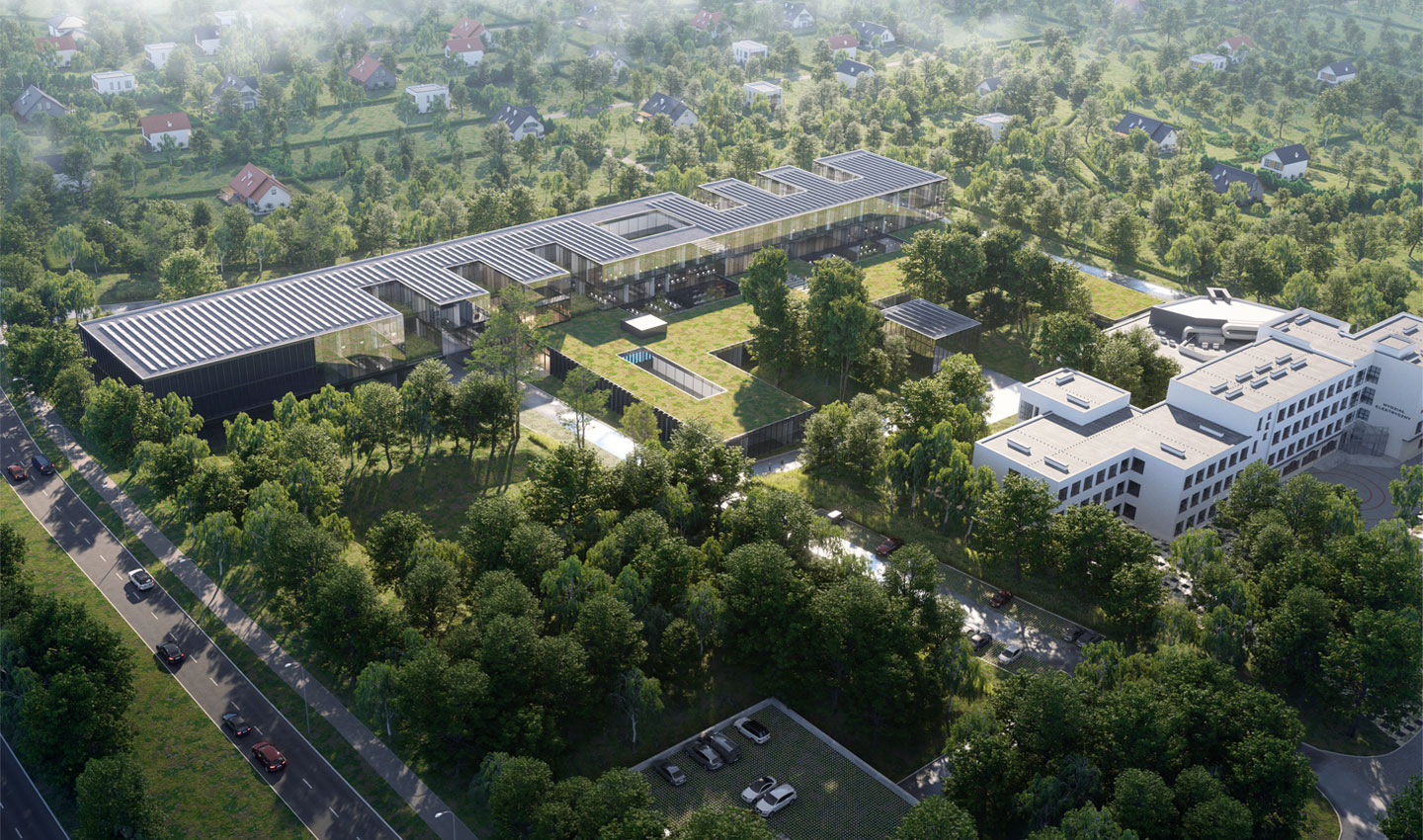
The project site includes the existing building of the Faculty of Electrical Engineering, designed in 1995 (date from project information sheet) with Prof. Stanisław Skoczowski auditorium added 15 years later. The site slopes towards the east with a height difference of approx. 6-7 metres. Its eastern part, along the boundary of the area covered by the competition, is flat and unwooded and contains garages that will be demolished. There are also embankments and five green “basins” (one outside competition area). These can be seen on 1917 maps and described at that time as “pulver magazine“, unwooded in their bottom sections. Perimeters of the “basins” are embanked and wooded. Other features include a green strip adjacent to 26 April Street, a strip of intensive green along the north-south axis separating the faculty building from the ‘garage’ site.

Of all the features mentioned, greenery and embankments of the basins are the most important. The terrain configuration and biodiversity, as well as abundance and intensity of greenery make the place unique, distinctive, easily identifiable and undoubtedly evokes a wealth of experiences (introduction to Genius Loci, above). Not only do we need to respect the existing greenery, but it should also inspire and enrich us. The planned building should not stand out as much as the existing one. Contrary, it should blend, fade in and complement the existing facility. Through its architectural design and technical modernity (energy efficiency), the new building should also indicate the direction for the future transformation of the Electrical Engineering Faculty building.
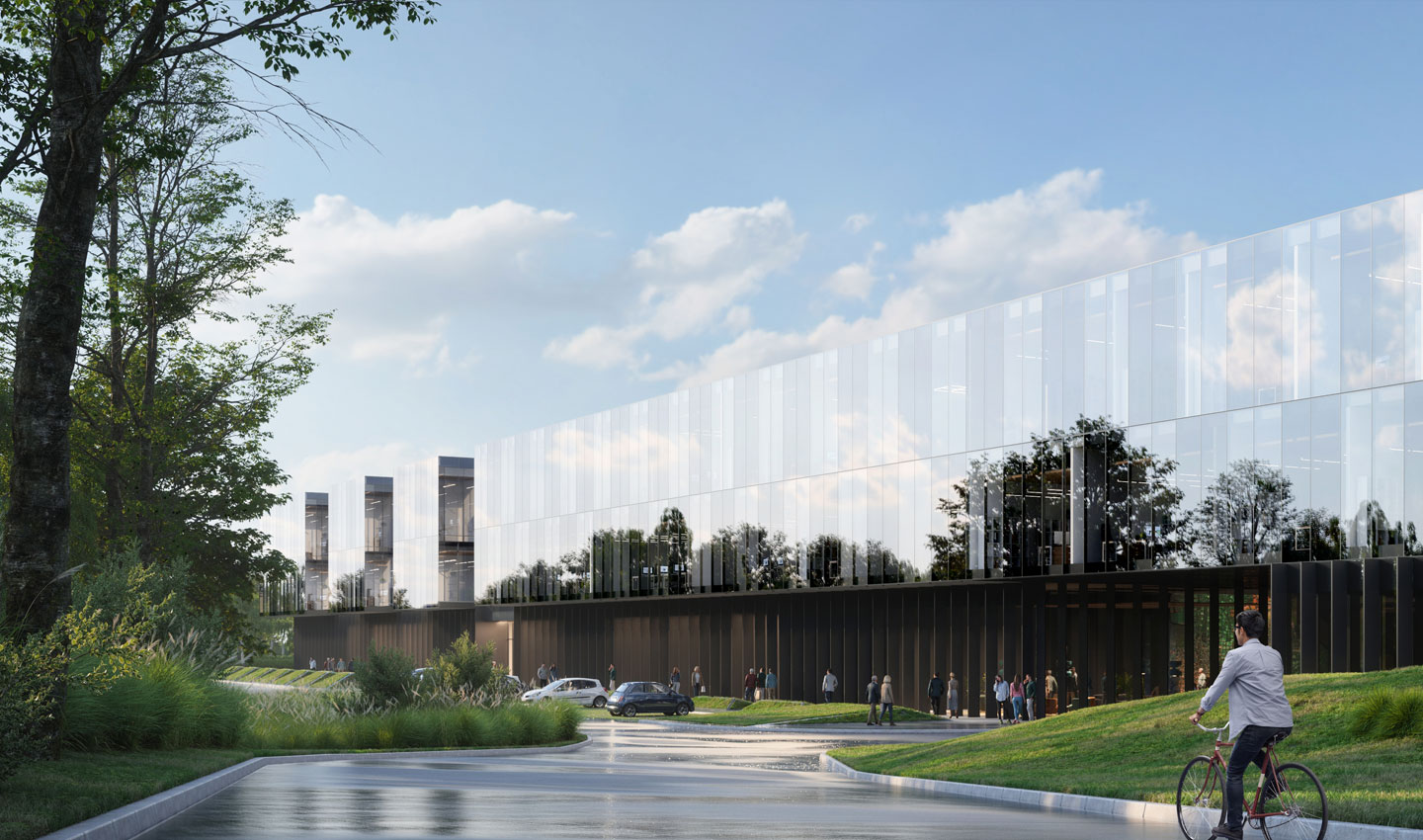
To respect its landscape value, we should avoid pronounced geometric constraints in the new building. This should lead to spatial empathy and creative caution devoid of aspiration to dominate the space. The physical boundaries of a building can hardly be blurred as there will always be some edges. However, by adjusting the scale of the new building, its structure and appearance, we can consciously and successfully reduce the impact of its physical body on the surrounding.
The new building consists of two parts:
- an elaborate ground floor (+1), the main part of which is located on the ‘garage’ site and extends towards the west, taking advantage of the terrain configuration, and
- a two-storey part, consisting in a horizontal fully glazed block.

Firstly, the main part of the ground floor section is placed exactly on the site of the existing “garage” and this helps to hide its first level in the terrain due to the slope towards the east. Secondly, it eliminates the need for costly earthworks. A green roof has been planned on top of the large ground floor section, which merges it with the site and improves the microclimate in rooms located precisely under the green roof. This consequently reduces the cost of cooling and heating needed to maintain a constant temperature in this part of the new building. The ceiling above the ground floor is a base for a sizable, elongated part of the building of the Faculty of Information Science. It is located along the north-south axis and extended towards 26 Kwietnia Street. To ensure the envisaged neutral and non-intrusive nature of the new building, our proposal includes glazed facades in a semi-structural system. For this purpose, reflective glass should be used, slightly tinted blue with graded reflectivity (more and less ‘mirror-like’) and spaced alternately every two panels. This solution makes it more articulate and additionally creates two planes of reflection for the green. The façade is a screen that displays images, and since it is saturated with images, it loses its ergo physical limitations and becomes ephemeral and fragile. Thus, the building can gently merge with its surrounding.
From the interior of the building, the glass façade offers an uninterrupted view of the surrounding greenery. This contributes to a comfortable sense of orientation in space and a feeling of calmness and harmony that helps people to focus on their tasks. The interiors are decorated with natural materials, such as wood and concrete, pleasing to the touch and evoking warmth and cosiness. Additionally, they redefine the character of university interiors as a more settled and less formal place open to the needs of their users.
The same is also emphasised by armchairs, sofas, seats, pouffes, soft carpets, standing lamps, indoor greenery placed on the floor and flowing down from the ceiling. Walls in lecture theatres and student laboratories are made of raw concrete with murals containing IT-related patterns.

Jesteśmy w Szczecinie, którego wyjątkowość definiują, między innymi mozaiki na wielu budynkach, rozsiane po całym mieście. W 2020 roku z inicjatywy lokalnej społeczności powstała mapa z dokładną lokalizacją 111 kompozycji mozaik szczecińskich, stanowiąca nowy szlak turystyczny dla zwiedzających miasto, który według autorek projektu ma zwiększyć wiedzę na temat dekoracji architektonicznych oraz powojennej sztuki polskiej, a także docenić już istniejące mozaiki i uchronić je przed zniszczeniem. Uznając ten projekt za bardzo wartościowy, chcemy dołożyć kolejną stację na mapie szczecińskich mozaik, kultywując tą wyjątkową cechę Szczecina. „Nasza” mozaika znalazła swoje miejsce w holu wejściowym nowego budynku na najbardziej wyeksponowanej ścianie. Wprowadzając do środka prawdziwe, ręcznie robione rzemiosło, dopełniamy wyjątkowości tego miejsca, a sesje zdjęciowe turysty i każdego studenta obiegną zapewne cały wirtualny świat.

W „niecce” pomiędzy istniejącym budynkiem WE, a nowoprojektowanym WI, organizujemy przestrzeń integracji na świeżym powietrzu, przy niej lokujemy kameralny obiekt pawilonowy z bufetem i czytelnią. Jednocześnie przewidujemy zagospodarowanie kolejnej „niecki”, ulokowanej na północy, w pobliżu ul. 26 kwietnia, jako otoczony zielenią – plac parkowy, gdzie przewidziano też lokalizację stojaków na rowery. Zagospodarowane „niecki” pomiędzy budynkami, oglądane obrazy zieleni ze środka budynku, kontakt z naturą i zastanym (zielonym) ładem przestrzennym, spotęgowane równomiernie rozłożonymi w budynku zielonymi tarasami i atriami uzupełnionymi komunikacją wewnętrzną, dają szansę na zmianę rutyny życia akademickiego. Słowami Zamawiającego,: „tworzą przestrzeń inspirującą, innowacyjną, elastyczną, dostępną i wspomagającą przeprowadzane tam procesy naukowe i dydaktyczne.”
